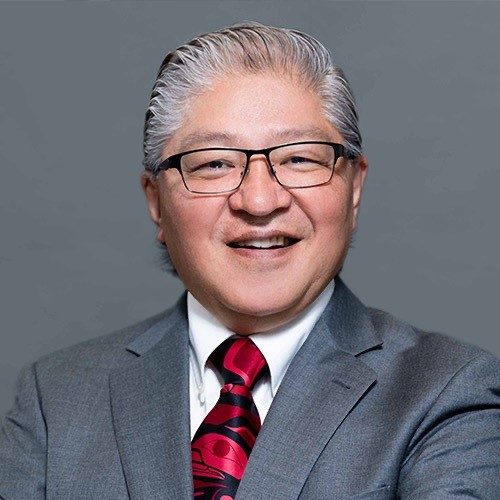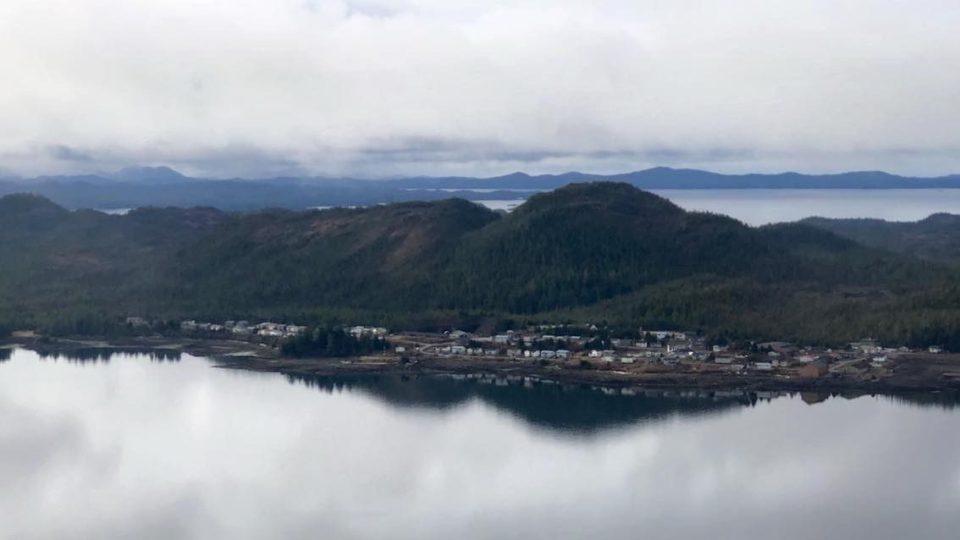There is a winter spiritual tradition among the members of the Gitxaala Nation of taking a plunge into dark, swirling waters of the Pacific Ocean off Dolphin Island in northern British Columbia, their ancestral home for tens of thousands of years.
“Cold water baths is one of our ways. It feels like millions of needles hitting you at once when you jump into the ocean,” says Chief Clifford White, a hereditary leader and former elected chief councillor of the Gitxaala Nation. “If you don’t work with the elders to prepare for that, going into the water could induce a heart attack, shock, and even kill you.”
White, a board director with the First Nations LNG Alliance, sees parallels with the industry’s development in the region requiring the same kind of rigorous preparation, both in First Nations communities as well as head offices of resource companies and government regulators.
“Our settlement of Gitxaala is the oldest Nation on the coast and is surrounded by the pristine sea, so what happens in the ocean is very concerning for our members. We, as Gitxaala, still consider the ocean as our fridge. During the worst of the Great Depression, our community didn’t experience hunger,” says White of the settlement about 60 kilometres south of Prince Rupert and home to about 500 of the nation’s 2,000 members.

White sees the need to educate communities in the region about LNG development.
“Natural gas isn’t crude oil and it’s important people understand the difference in risks. We also need to think about protecting the environment globally as well as locally. Developing natural gas to displace coal, oil, wood, and other forms of energy with much bigger environmental impacts is a risk worth taking to help the world,” says White.
“And even within our communities, we need to look at the impact of burning wood or oil, which is far more harmful than using natural gas. That’s an education piece for our people, who have been used to using these types of fuels.”
White also has highlighted opportunities for members of the Gitxaala Nation and other Indigenous communities throughout the province.
“I see a real opportunity for our young people to get trained and work in monitoring, research and continuing our ancestral responsibility to ensuring the environment is protected. There are many opportunities to work, such as tugboat operators, environmental management, and as power engineers as projects begin operations,” White says.
“We have seen a lot of people come into the region from outside of B.C. to build this infrastructure and it’s important our people have the opportunity to participate in that activity as well as operations.”
White has spent a long time working to include First Nations in shaping policy decisions in British Columbia. He served as chair of the First Nations Advisory Committee for British Columbia, working with the provincial government to ensure First Nations are included in the key decisions that affect their territories.
“A good example of the work we did was with B.C. Infrastructure Benefits. When the provincial government built highways, schools, hospitals and other infrastructure in specific territories, it’s important to connect, collaborate and work with the First Nations in their respective areas for co-development and co-management,” White says.
“That wasn’t always a given. It was important to make sure First Nations have opportunities at procurement and employment for all major projects within their traditional territories. And it was also important to make sure the First Nations have the training to take advantage of those opportunities.”
His work has extended to a board role on the B.C. Industry Training Authority to work with companies and trade unions on Indigenous workforce development in the province.
White has also worked with the 26 Indigenous Skills, Employment and Training (ISETS), sponsored by the Indigenous Services Canada and supported by the provincial government. They have brought together unions, corporations and government to understand the roles and responsibilities of the ISETS and how they could partner with each other.
“Partnerships are critical for trades training and other academic opportunities. ISETS work directly with unions, colleges, universities, and [the British Columbia Institute of Technology] to ensure qualified and credible training is afforded to Indigenous peoples,” he says.
“We will need skilled trades, whether it’s to help build the LNG industry or critical infrastructure for our communities.”
Most importantly, White wants the legacy to include the environment that his ancestors have fished and hunted on for generations.
“Indigenous people, are the caretakers of this planet and we can be a part of making effective change,” he says. “For our children and our children yet to be born, it’s important to have these opportunities and to maintain the same pristine environment for them to at least the seven generations to come.”
The unaltered reproduction of this content is free of charge with attribution to Canadian Energy Centre Ltd.
